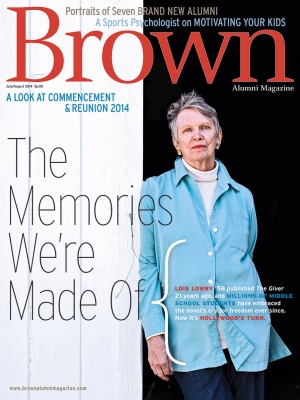After reading the Finally column about the 1927 Brown Band recording, I checked it out online, and it sounded surprisingly good (“Camden Songs,” May/June). The original recording would have been made with an electrical microphone, with a vacuum-tube amplifier driving the cutting stylus. Before about 1926, the process involved a large megaphone that focused acoustical mechanical energy on a diaphragm and stylus that scribed warm wax. The “VE” in a circle in the dead-wax area shows that it was a “Victor Electrical” recording. The special re-press run that the article mentions probably would have been made in 1946 or later, because civilian production of records had been suspended during World War II, except for V Discs for troop morale.
John Marks ’76
Providence
The writer is a senior contributing editor for Stereophile magazine.
I must compliment you on the accuracy of your reporting in the Finally column on the Brown Band’s 1927 record—right down to Fats Waller at the organ. You may be pleased to learn that the “masters” of the Brown Band’s 1927 Victor recordings do survive. These are reverse-image metal plates made from the original wax impressions, in what are now the Sony Music Archives. “Negative” metal masters are mirror images of the wax cutting: the “grooves” are ridges sticking up, and the “stylus” is actually two styli glued to form a “V,” which rides the ridge running backwards. They were the first stage of the electroplating process and were never intended to be played. Often—as in this case—the sound is distorted.
Raymond F. Lynch ’42 and his father, the record’s owners, took very good care of it. Good transfer quality to digital, also. My Sony colleagues and I are especially taken with the vocals. Some of us even prefer them to the contemporary Columbia recordings by the Princeton Triangle Club featuring James Stewart. Hail, Brunonia!
Mark Kirkeby ’74
Brooklyn, N.Y.
Do we have a roster of members of the Brown Band who performed for the recording? My father, Myron S. Hackett ’30, played the trombone in the Brown Band for all four years at Brown (I think), and I would like to know if he was in the band that made the recording. Also, my uncle, Russell E. McKenna, ’29 or ’30, also a trombonist, may have been there. Thanks.
Douglas Hackett ’61
[email protected]
Potomac, Md.
According to Director of Bands Matthew McGarrell, if the 1927 roster still exists it would be in the Brown Band collection at the John Hay Library.




